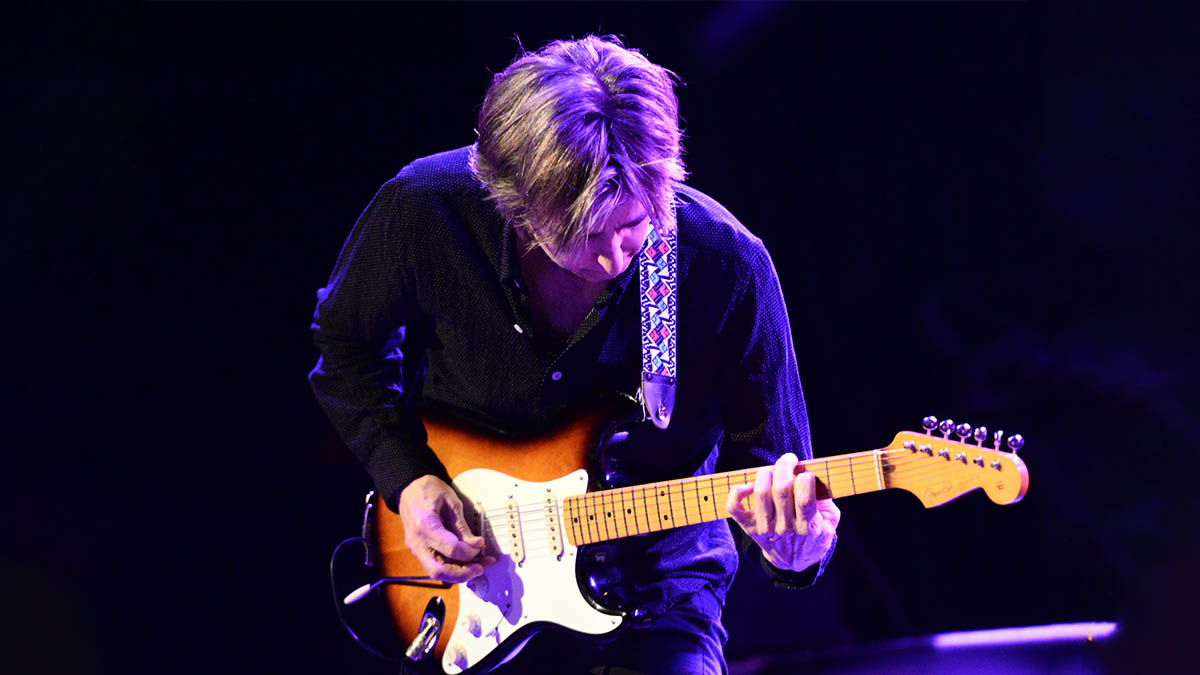How to play blues like Eric Johnson
Crank up the delay, and grab a Strat, SG or ES-335: it's time to take a look at the bluesier side of the Texan virtuoso and Grammy award winner

Eric Johnson is a masterful guitarist. He is world renowned for his formidable technique, impeccable tone, and a perfectionist approach. He has an unwavering devotion to his craft and has risen to legendary status among the guitar community.
He may not be the first name that comes to mind when considering blues guitarists, as his long career has seen him covering a wide range of genres from rock, to jazz fusion, folk, and even country, but the blues influence on his musical choices, his tonal palette and his influence on many modern blues guitarist cannot be denied.
Born in 1954 in Austin, Texas, Eric was part of a very musical family and began playing piano in his early years, before switching to guitar at age 11. He absorbed a vast array of styles and cites a diverse range of artists as his main influences such as Eric Clapton, Jimi Hendrix, Mike Bloomfield, Chet Atkins, Wes Montgomery, John McLaughlin, and Django Reinhardt.
This melting pot of genres would inspire Eric to develop his own unique approach that incorporated elements of these influences in to his own distinct voice, and by the age of 15 Eric had joined his first professional band, Mariani, which blended 60s-era rock with psychedelia.
Eric openly admits that he was deeply influenced by Cream-era Clapton and cites this influence as having a huge affect on his phrasing, but most notably on his tone.
The violin tone that Johnson is so well known for can be traced back to Clapton’s infamous woman tone that he developed with Cream, and it was this element of Johnson’s early blues-rock influence that would remain a part of his distinct style.
Later, Johnson would become excited by more complex, jazz infused harmony and opted to combine this with his signature smooth, warm, yet fairly overdriven tone. This sound was honed in his next group, the Electromagnets, a jazz-rock fusion outfit that was dubbed by fans as “the Mahavishnu Orchestra of Texas”.
All the latest guitar news, interviews, lessons, reviews, deals and more, direct to your inbox!
It was in his offerings as a solo artist, however, that eventually propelled him into the limelight, first with his 1986 debut album Tones, establishing the unique mix of instrumental rock, power pop vocals, and blues-jazz fusion that became his hallmark but most notably with the second album, 1990’s Ah Via Musicom, which included the acclaimed Cliffs Of Dover, for which Johnson received the grammy for Best Rock Instrumental Performance.
These albums provided the perfect platform to showcase Eric’s unique style, effortlessly blending fast Pentatonic runs, open-string arpeggios, pinched harmonics and exotic chord voicings.
Our studies aim to present some of Eric’s signature moves, such as the fast sequenced Pentatonic runs, which are worth exploring in different groupings, open voiced triads – a common device in Eric’s playing, as well as his rapid yet sweet, violin-like vibrato.
Be sure to also go straight to the source and check out some of Johnson’s tracks, not just for his jaw-dropping speed and technique, but also his rare ability to remain utterly tasteful in every musical choice.
Get the tone
Amp Settings: Gain, Bass 4, Middle 5, Treble 3, Presence 2
EJ is a legendary Stratocaster player but is not averse to using Gibson SG or ES-335, which seem to be his choice for the bluesier songs. He is famous for his multi-amp setup, choosing Fender for rhythm, and Marshall for lead. Whatever you have available, use the bridge pickup with plenty of treble rolled off for a thick, overdriven tone with a generous helping of delay.
Example 1. Major sounds over dominant chords
This example employs both Major Pentatonic and Hindu Pentatonic (R-3-4-5-b7), plus Eric’s signature Minor Pentatonic groupings and open-voiced triads (bar 9), for which hybrid picking works well. Pay close attention to the hammer-ons and pull-offs throughout as this is integral to capturing Eric’s phrasing and feel.
Example 2. Blues rock shuffle
Our second example is more riff based and illustrates how Eric might play over a shuffle groove. Notice the unconventional powerchord fingering in bars 2 and 6. This change is best executed with a barre over the three bass strings. Also notice the line in bar 9 that utilises wider intervals such as 4ths and 5ths, a classic EJ sound!
David is a guitarist, producer, and educator. He has performed worldwide as a session musician, with artists and bands spanning many musical genres. He draws upon over 20 years of experience in both live performance and studio work, as well as numerous composing credits. As a producer, he's collaborated with artists across genres, including pop, RnB, and neo soul. David holds a master’s in jazz guitar and teaches at BIMM London and the London College of Music. He is also a regular contributor to Guitar Techniques magazine, sharing his love of blues in a monthly column.

